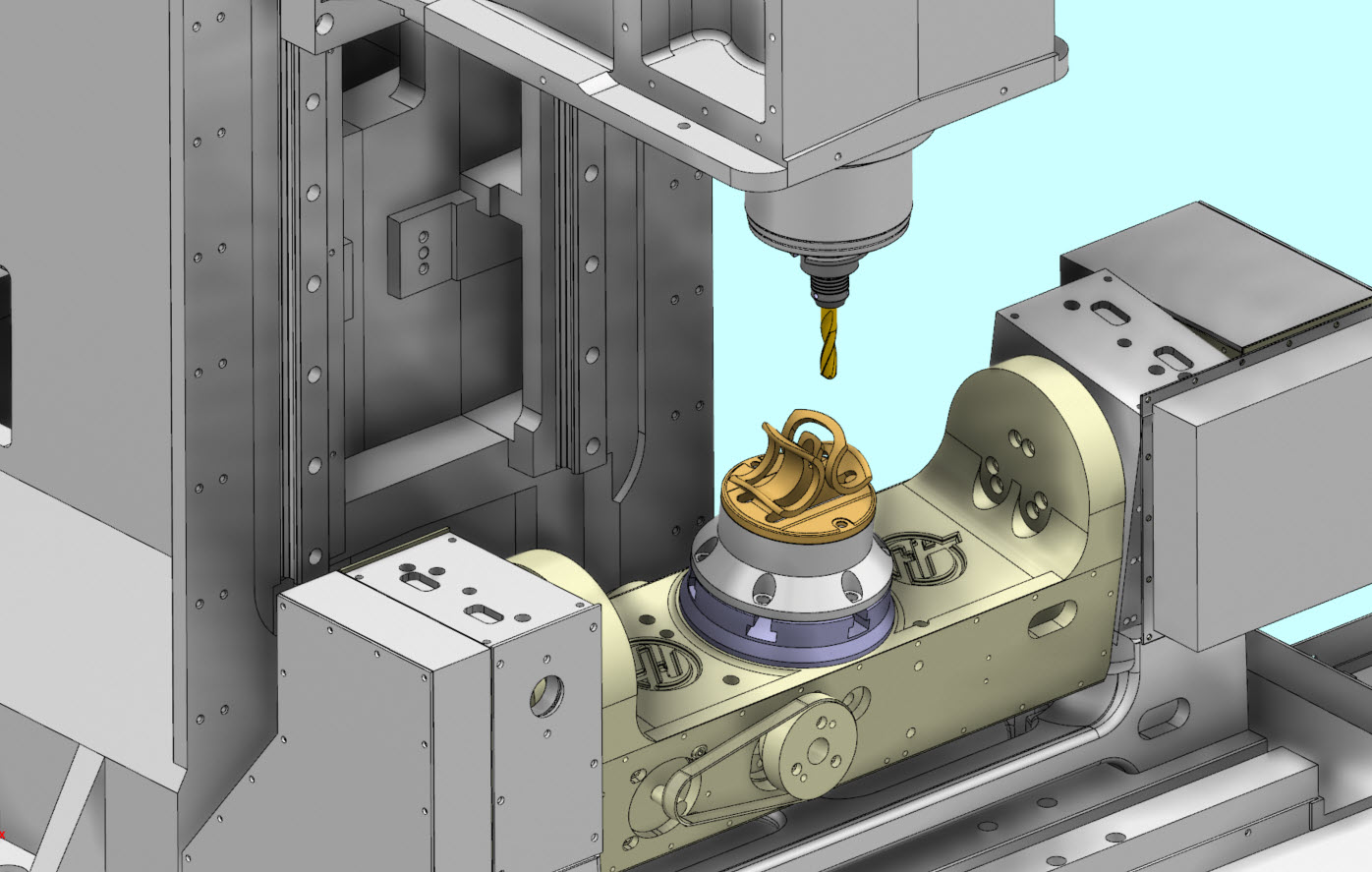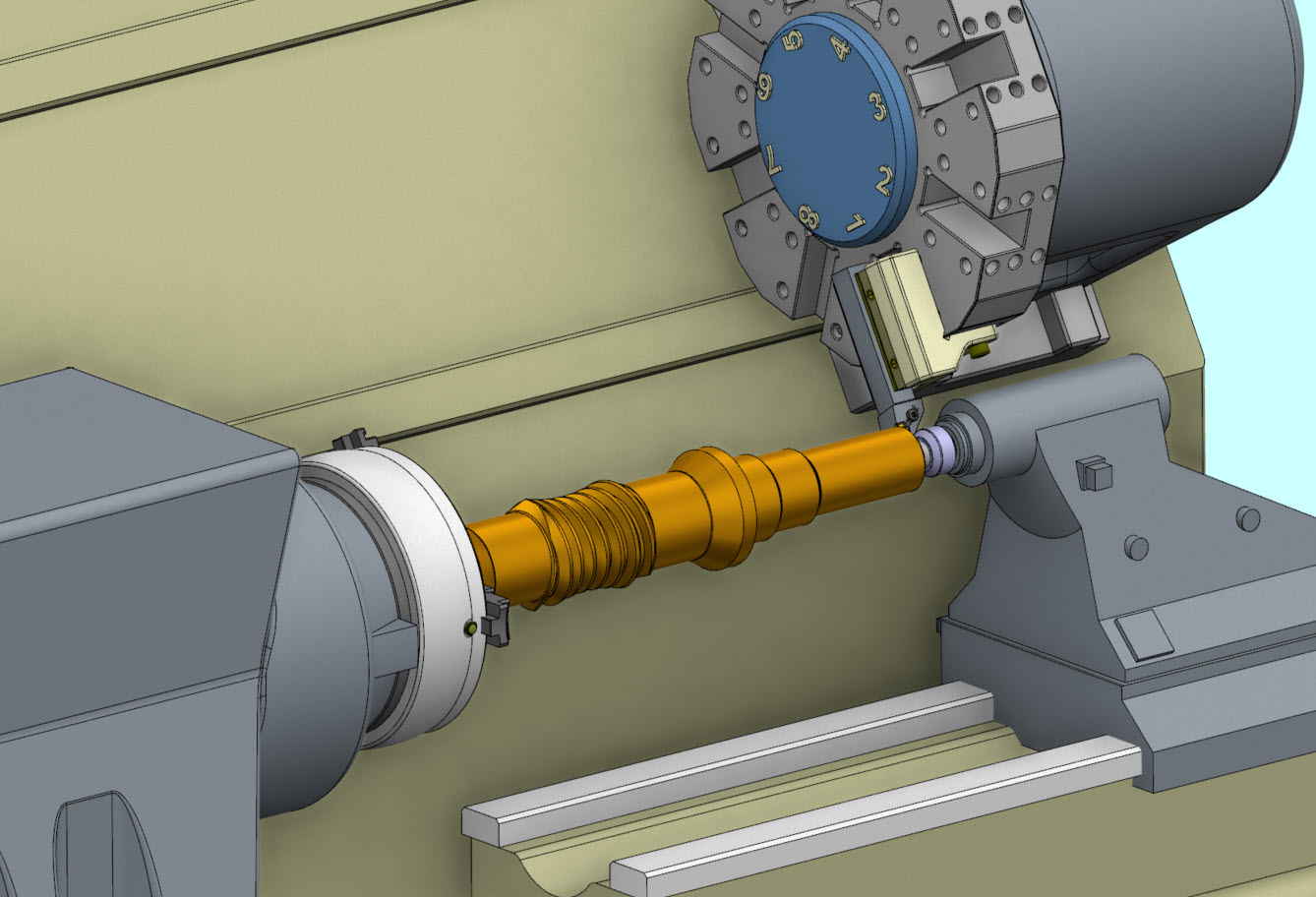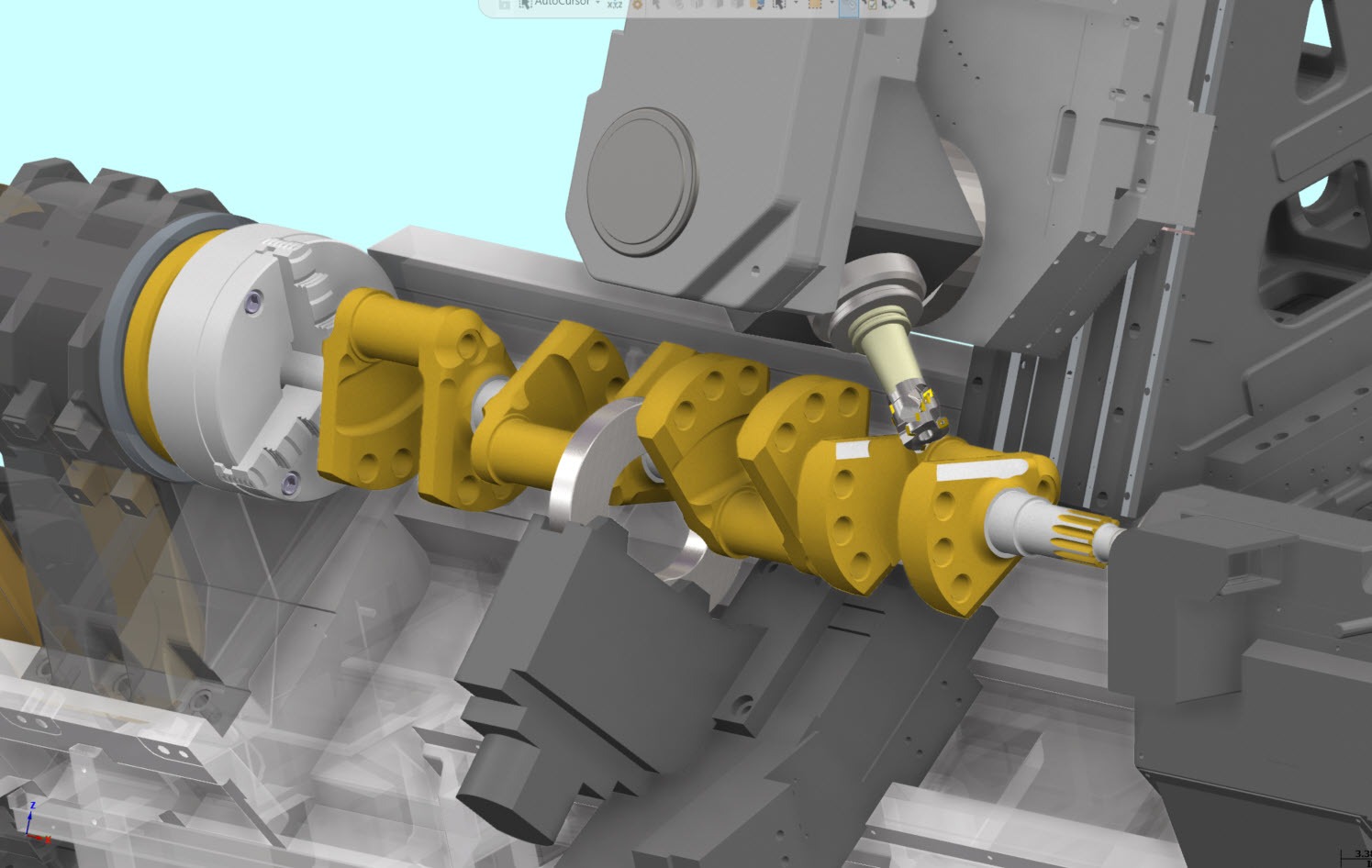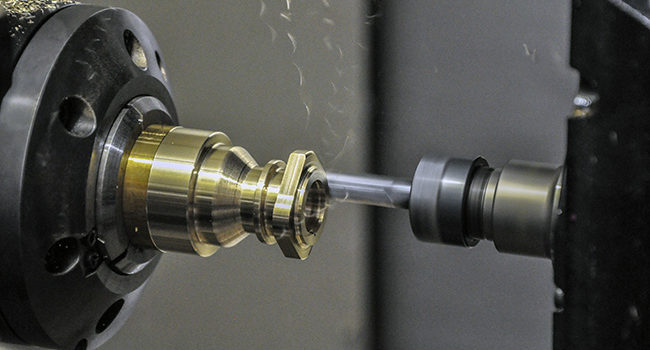By: MICHELLE NEMETH
Choosing which kind of CNC machining to use — mill, lathe, or mill-turn — can be overwhelming. All three techniques are forms of subtractive manufacturing; they cut material away rather than add material on, unlike additive processes like 3D printing. But what sets them apart from each other? Mostly, the answer lies in how they remove that material and which piece rotates: the cutter or the workpiece.
What is milling?

Milling is the most commonly used process of the three. In milling, a multi-bladed cutting tool rotates quickly to cut away material while the workpiece is held stationary or moves along a set path. Milling centers can range from 2-axis milling machines, which cut holes and slots along the X- and Z-axes (horizontally and vertically), to multiaxis milling machines, which cut much more complex geometries by using rotational axes in addition to linear axes (like the original X- and Z-axes). A vertical milling center positions the spindle and cutter above the table, which holds the material to be cut. There are two basic types of vertical centers: turret and bed. Turret vertical mills keep the spindle stationary while the table moves along linear axes to direct the cutting. Bed vertical mills allow the spindle to move along the Y-axis while the table moves along the X-axis. Horizontal milling centers have the spindle oriented horizontally instead of over the table.
What is turning?

A lathe machine is designed to have its workpiece spin at high speeds while a stationary, single-bladed cutting tool removes material. Turning is most useful for creating parts that are cylindrical in shape or have radial symmetry, but most lathes are also capable of drilling, boring, grooving, and threading. Their configuration also makes them ideal for oversized workpieces.
What is mill-turn?

Mill-turn techniques combine the best of a mill and a lathe. A mill-turn center is essentially a hybrid machine that uses the tool rotation of milling and the workpiece rotation of turning. Mill-turn allows users to machine more complex parts without switching machining centers and in much less time. The average mill-turn center can complete four operations to every one performed by a mill or lathe. This process is best for complex parts that would require milling and turning both.
Find your fit
All Mastercam CNC machining solutions come with a complete tool library, intuitive part handling, and advanced machine simulation with accurate visual display, and each is customizable and scalable for any shop. But which solution will work best for your shop?
Mastercam Mill Solutions offer support for the entire milling process, from CAD for CAM design tools for wireframe, surfaces, and solids, to Accelerated Finishing and native verification. Advanced milling toolpaths, including Dynamic Motion technology toolpaths, are designed to maximize efficient machining while minimizing production hours. Specialized tools like Port Expert and Blade Expert provide even more focused solutions for niche manufacturers. The Mill product also offers multiaxis support.
Mastercam Lathe Solutions equip users with powerful tools for simplified roughing, grooving, threading, parting, boring, drilling, and finishing. Intelligent ID and OD roughing save time and mouse miles by automatically finding efficient machining options. Lathe not only comes with advanced CAD for CAM features and live tooling, but it can also be combined with the Mill product for more advanced operations.
Mastercam Mill-Turn Solutions enables effective milling, turning, and drilling operations with as few setups as possible. It features automation to easily manage complex operations between multiple machine data streams, making it the perfect product for shops with complex parts and time constraints.
This content was originally published on the Mastercam website.

